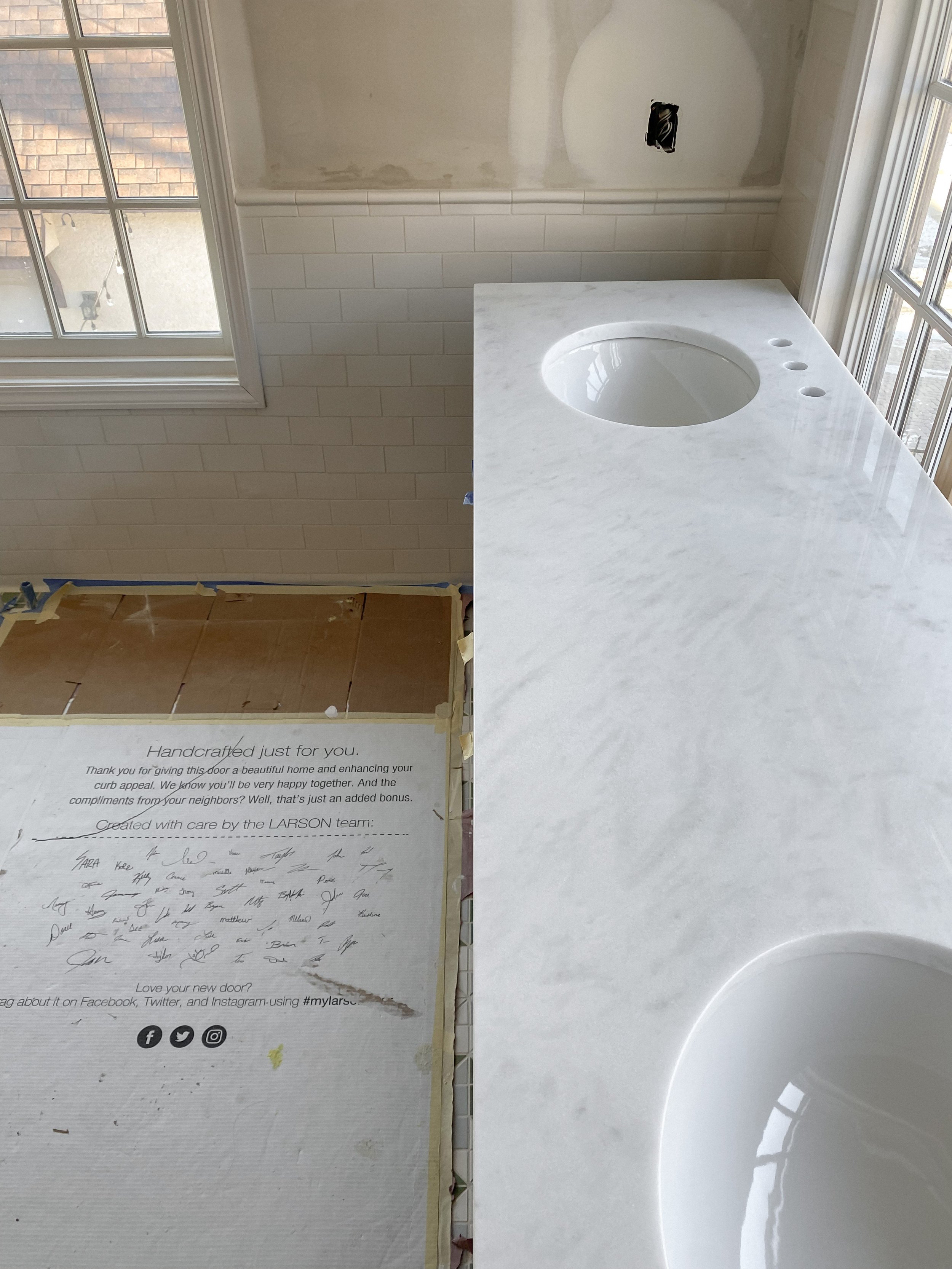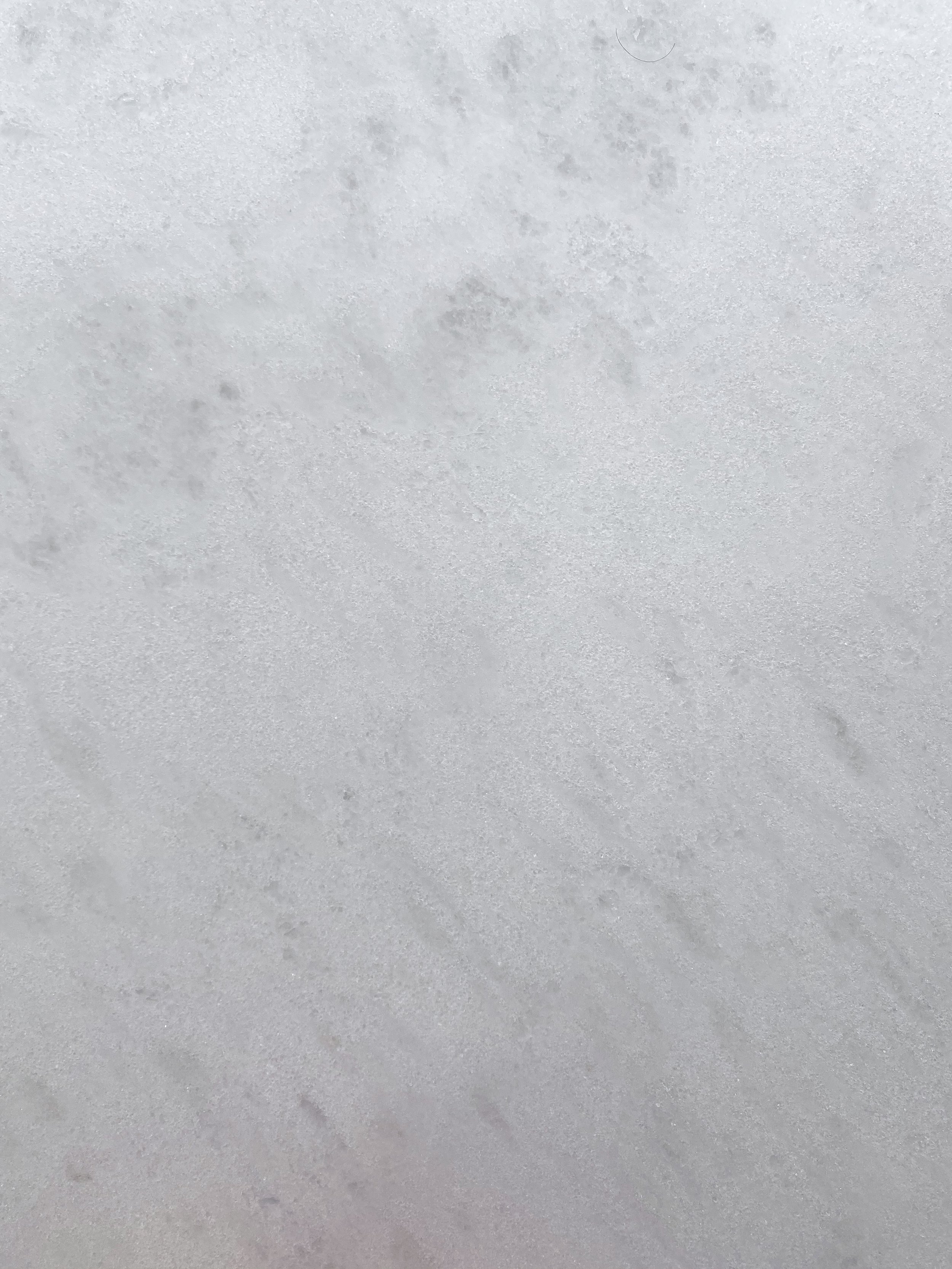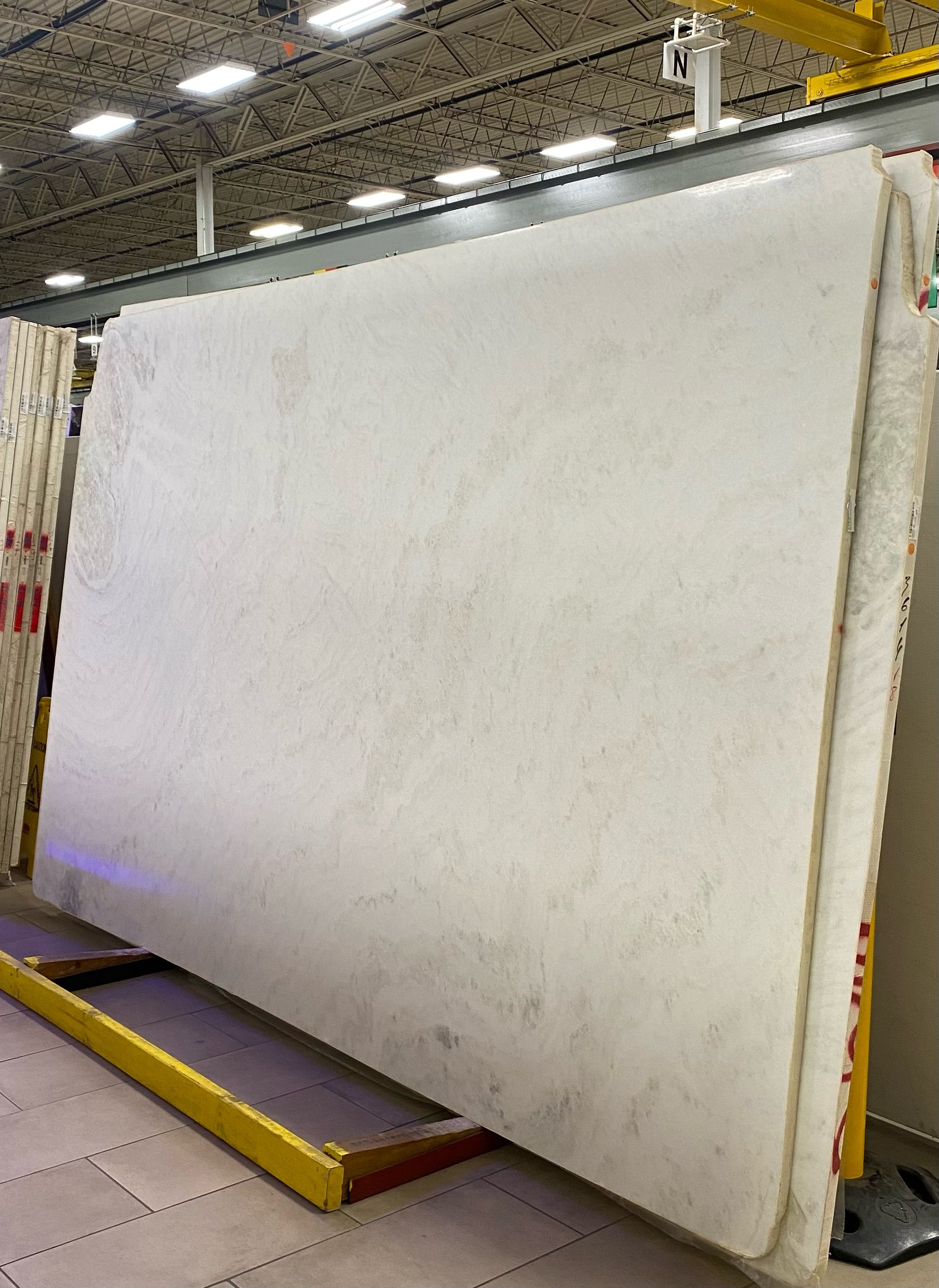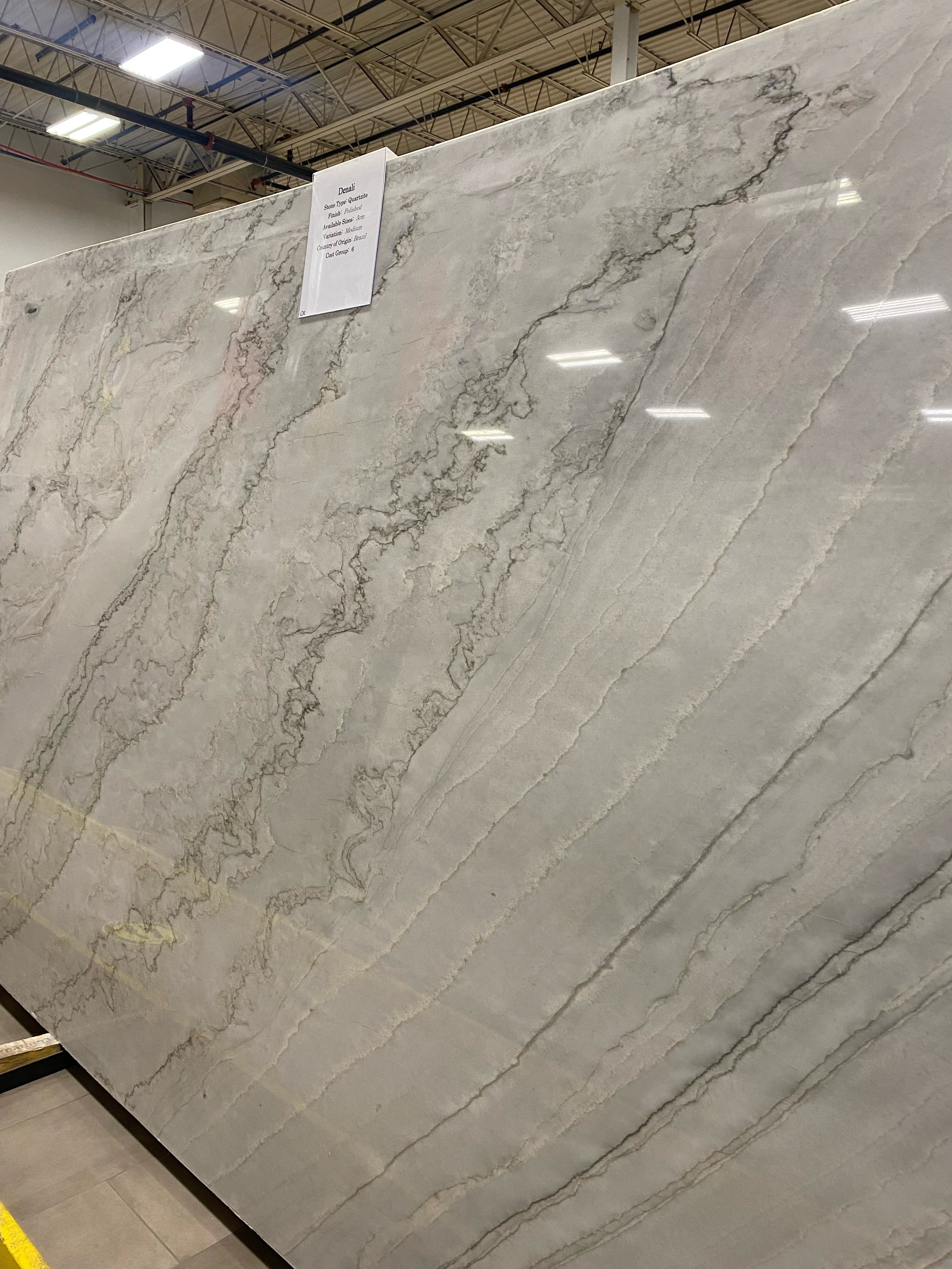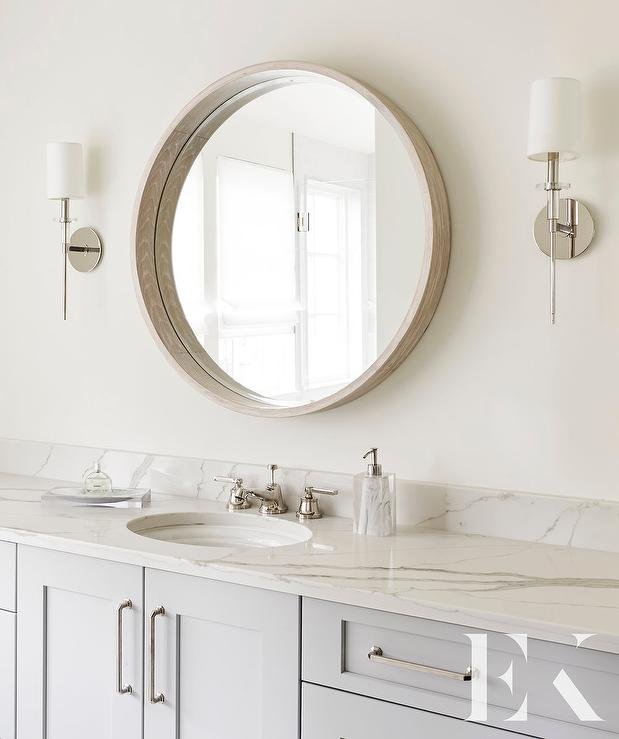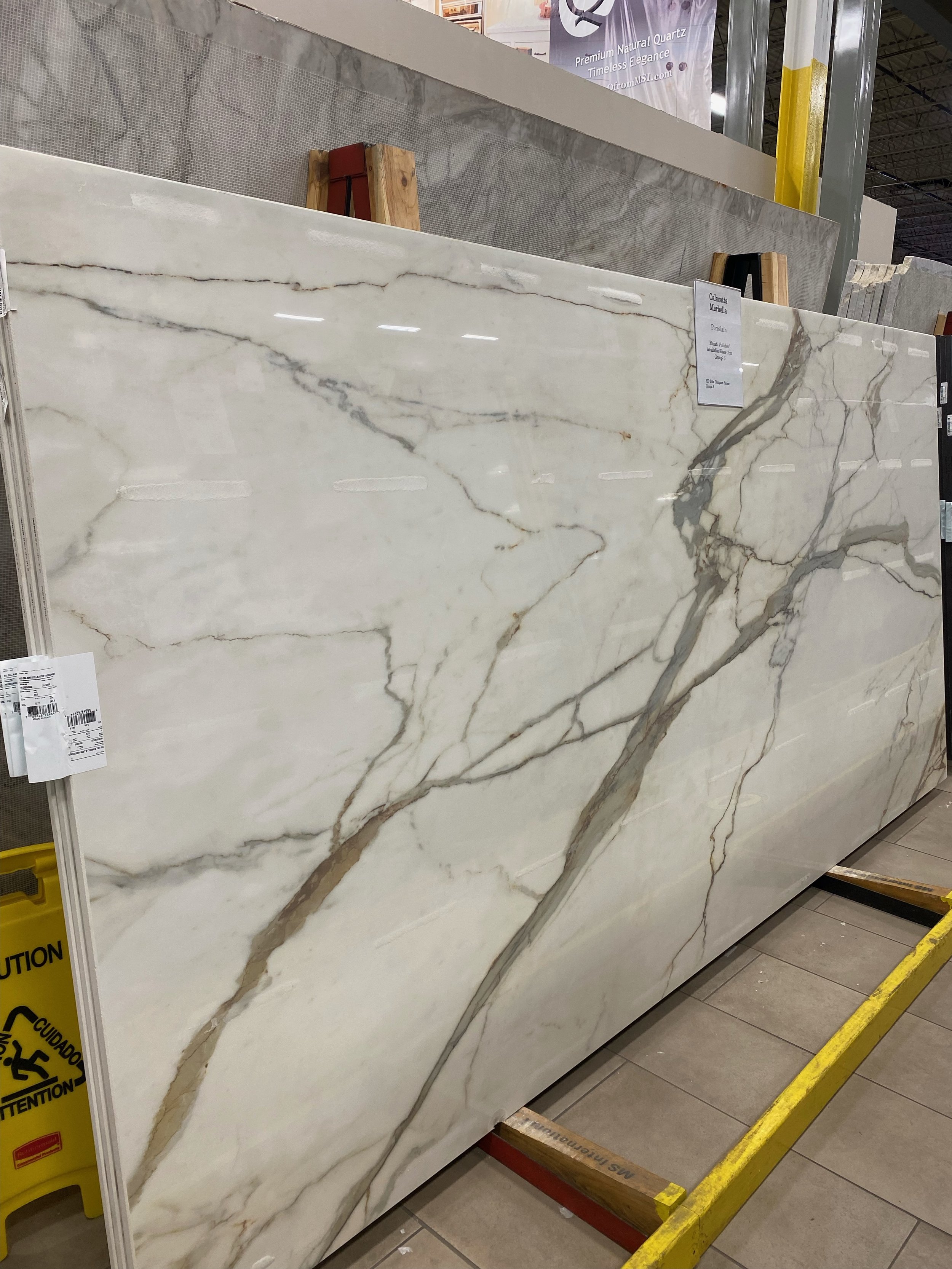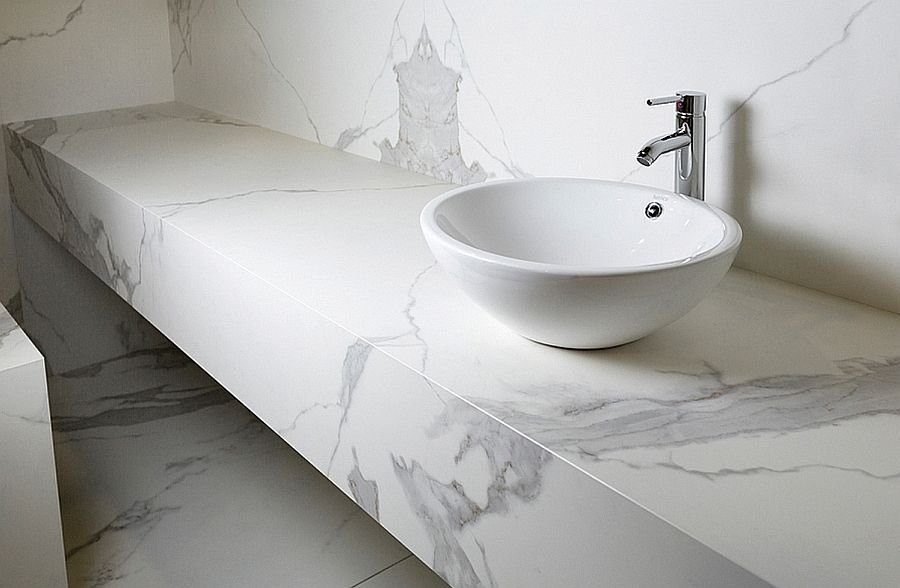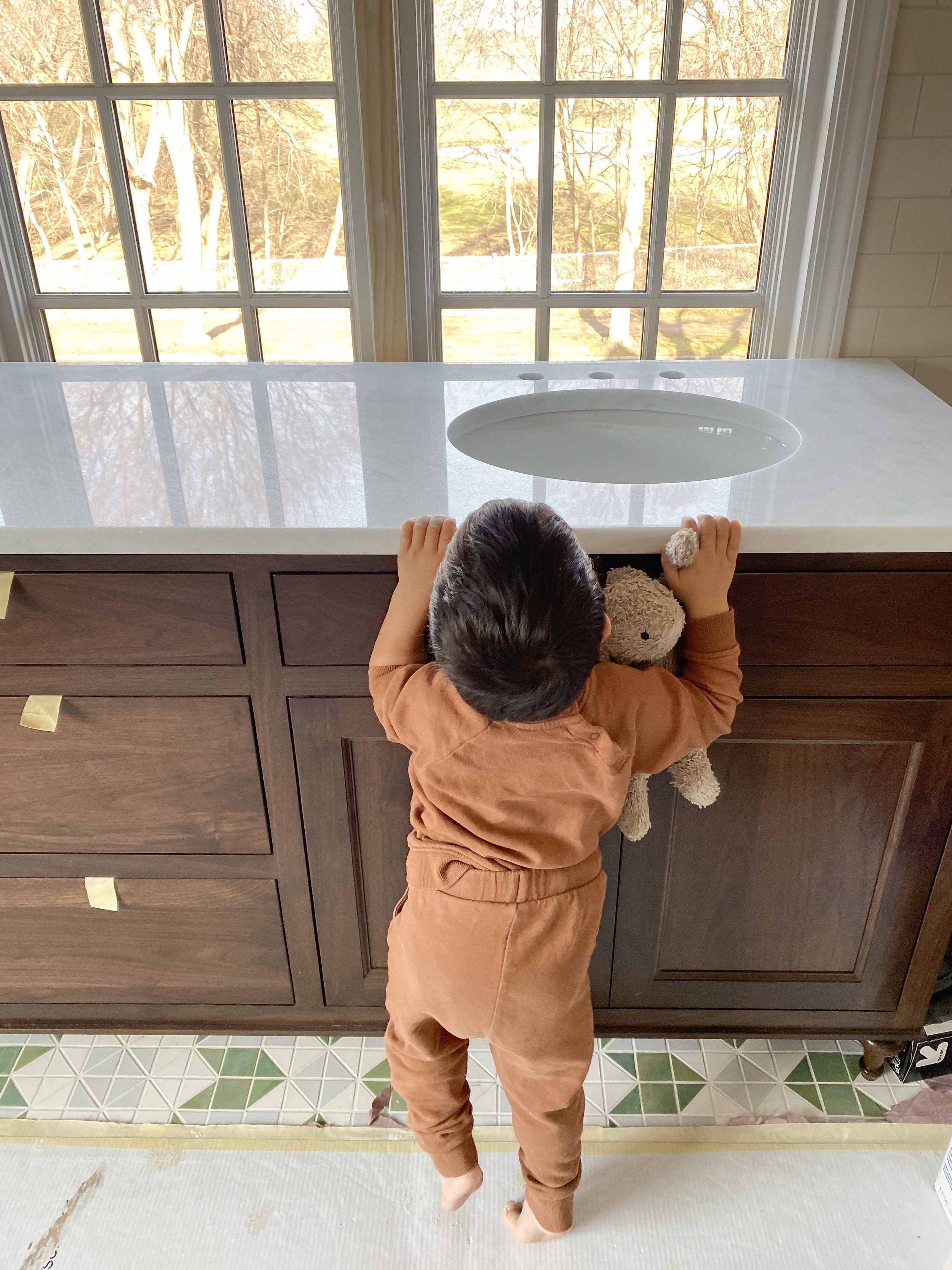Comparing Quartzite and Porcelain as a Marble Alternative
If you have been following along on our ensuite bathroom renovation, you saw our journey of picking out countertops. We looked at a lot of countertop choices. Ultimately we went with marble but were open to quartzite and porcelain as other options.
love our Carrara marble countertop in the ensuite bathroom!
I have heard that quartzite and porcelain are great alternatives to marble so I’m sharing some pros and cons of both. I also included some real-life experiences my instagram followers had with quartzite and porcelain countertops but first let’s take a look at marble.
Marble
Marble is a beautiful natural stone that has been used throughout history. I love their variation in movement and veining. I also love that no two are alike so you truly have a one of a kind piece in your home.
Pros of Marble:
-
It’s durability
-
It is long-lasting
-
Every slab is unique
Cons of Marble:
-
It can be very expensive
-
It stains easily
-
It is prone to scratches
close-up of our marble countertop in the ensuite bathroom
My Experience with Marble:
We have honed marble that has been sealed in our kitchen island and polished marble in our guest bathroom tile and floor, both installed about eight years ago. Our installer made us sign a waiver for the kitchen countertop and tried to steer us to other choices. I believe that if you decide to go with marble, you have to accept its imperfections over time and view it as “character” which is kind of our mindset living in an old home.
-
I love the movement and knowing that it’s one of a kind
-
We don’t baby it but do wipe up every night
-
This is common sense but we wipe up right away after wine spills or contact with acidic liquid
-
There are etchings and scratches but we don’t really notice them unless we’re searching for it
-
We’ve accidentally hit our pots, pans and dishes on the surface after hand washing and you can see white marks in the trauma areas. However, there is no chipping.
-
We don’t have any staining yet
Our Bathroom Floor and Wall Tile (Brian installed himself)
-
It looks very high end
-
There are etchings and scratches but just adds to the character
-
One of our guests dropped a glass soap pump on the floor tile and it chipped off a small piece.
-
There is one small area on the floor tile that has a yellowish stain which we can’t figure out how it got there but you prob won’t notice unless we point it out.
this is our marble slab in the showroom
Quartzite
Quartzite (not to be confused with quartz) is also a natural stone. It’s becoming a very popular choice for countertops because of its durability and design. Although white is the most popular color, quartzite comes in a variety of colors from grey and brown to pink and purple.
stunning quartzite slab from the showroom
Similarity and Differences Between Quarzite and Marble
Quartzite and marble have a very similar texture. However, Quarzite can be grainy unless polished smooth. Both have beautiful veiny patterns and they are both natural stones.
Pros of Quartzite:
-
It’s durable
-
It’s versatile
-
Easy maintenance
Cons of Quartzite:
-
It is prone to scratches
-
It’s porous and you may have to reseal
-
It is difficult to install
-
It can be expensive (cost)
-
It doesn’t handle heat well
Followers Experience with Quartzite Countertops:
Most people could not rave about it more. There were a few negative experiences but for the most part, people love their quartzite countertops! Here are some of their experiences:
-
It gets cold in winter
-
It is super durable
-
Every slab is different
-
Looks brand new, even after years.
-
Love the natural and random movement
-
Some etching around faucets
-
It can get water or grease spots unless sealed well
-
TIP: use silicone heat pads with hair styling tools since it does not handle heat well.
image from: Decor Pad
Porcelain
Porcelain is a hard ceramic material. It can be manufactured and designed to resemble a lot of natural stones. The most popular is marble.
beautiful porcelain slab from the showroom
Similarity and Difference Between Porcelain and Marble
The main similarity is that porcelain can be made to look like marble. A lot of people use porcelain as an affordable alternative to achieve the look of marble. Searching for the perfect marble slab can be quite exhausting and you can expect some sticker shock because cost will vary which makes porcelain appealing.
Pros of Porcelain:
-
It is stain-resistant
-
It is durable
-
It is easy to clean
-
It is water-resistant
-
It’s more affordable
Cons of Porcelain:
-
It is thin material
-
It can crack with a lot of force
-
It can be hard to find fabricators
Followers Experience with Porcelain Countertops:
People seem to love their porcelain countertops but there were also a lot of negative experiences. Here are some experiences:
-
It is hard to get an installer or very $$
-
It is printed so you won’t have that authenticity of beautiful natural stone
-
It can look fake
-
It is not porous
-
It can yellow over time
-
It is hard to repair if it scratches or chips
-
White porcelain can stain
image from: Decoist
Based on our experience with marble, once we found THE one, we knew it was the right choice for us. But it was nice to know about these other two beautiful options .
We were looking for a warmer tone marble with soft movement and little veining to balance the pattern tile and not look too busy. Something that looked purely timeless. Many we saw were too cool in tone and once we found this slab, we had to pull the trigger!
Jack Jack approves 🙂
I hope you find this informative and helpful in your search and understanding of these three popular countertop materials!

